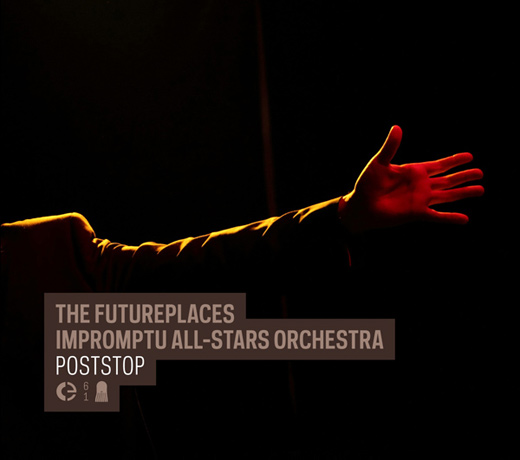
Futurónica #46
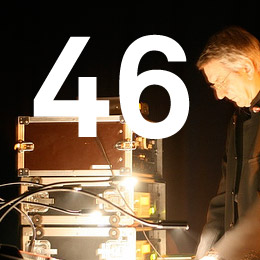
Episode 46 of Futurónica, a broadcast in Rádio Zero (every two weeks, on Friday nights, repeating on Tuesdays at 01h) airs tomorrow, October 7th at 21h (GMT).
The playlist for Futurónica #46 is:
- Main, Heuristic I (2002, Tau, (K-RAA-K)³)
- Asmus Tietchens, Teilmenge 7a (2001, β-Menge, Ritornell)
- Main, Heuristic III (2002, Tau, (K-RAA-K)³)
- Asmus Tietchens, Teilmenge 1a (2000, α-Menge, Ritornell)
- Main, Heuristic V (2002, Tau, (K-RAA-K)³)
- Asmus Tietchens, Teilmenge 7 (2001, β-Menge, Ritornell)
- Main, Heuristic IV (2002, Tau, (K-RAA-K)³)
- Asmus Tietchens, Teilmenge 1 (2000, α-Menge, Ritornell)
- Main, IV (2003, Transiency, Tigerbeat6)
You can hear Rádio Zero’s broadcasts at radiozero.pt/ouvir.
New release by Durán Vázquez in Mahorka

“Selected Ambience Wars†is the new release by Durán Vázquez available as a free download from the Mahorka netlabel. Get it from archive.org or through Mahorka’s website.
New podcast: Mathias Delplanque

This sound work was commissioned by French independent radio JET FM (Nantes) in May 2008. Mathias Delplanque spent one week recording sounds in the radio’s offices and used them as a material for a composition halfway between sound documentary, musique concrète and electronica.
“Radio Station” takes part in Mathias Delplanque’s series of works dedicated to the acoustic of specific spaces and contexts (“Call Center”, “L’Inondation”…). This piece focussed on the relation between sound and its broadcasting space, creating multiple degrees of sound and listening. We are not listening to music, we are listening to recordings of music played in the radio’s offices (mixed with ambient sounds, voices etc…).
Futurónica #45
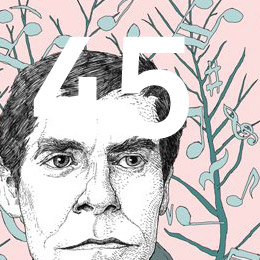
Episode 45 of Futurónica, a broadcast in Rádio Zero (every two weeks, on Friday nights, repeating on Tuesdays at 01h) airs tomorrow, September 23rd at 21h (GMT).
The playlist for Futurónica #45 is:
- Steve Peters, Part 1 (2011, Lições dos Antepassados, Self-released)
- Steve Peters, Part 2 (2011, Lições dos Antepassados, Self-released)
- Steve Peters, Center of Gravity (2007, Three Rooms, Sirr)
- Steve Peters, Auto de Fé (2007, Occasional Music, Palace of Lights)
You can hear Rádio Zero’s broadcasts at radiozero.pt/ouvir.
Jorge Mantas and Susana Mourão live in Évora

Next Friday, September 23rd, Jorge Mantas and Susana Mourão will present “Macchina d’Autunnoâ€, an audiovisual meditation on melancholy. 22h at the Igreja de S. Vicente in Évora.
Marc Behrens at Culturgest Lisboa

Marc Behrens presents “CLOUD: work in progressâ€, field recordings and electroacoustic diffusion. Tomorrow at Culturgest Lisboa, sala 2, 18h30. Free entrance.
New unlimited release: Leftovers (Reworked)
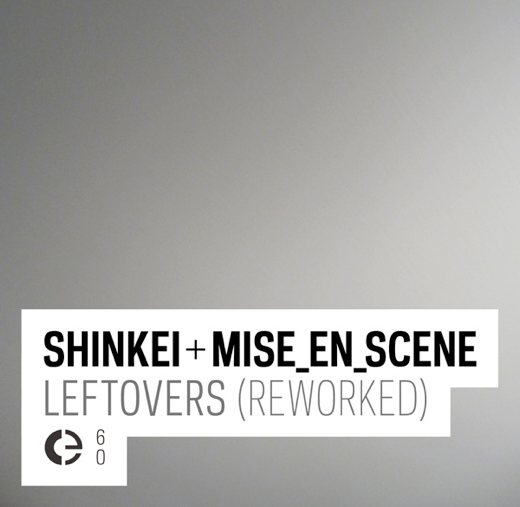
Crónica is very proud to present “Leftovers (Reworked)â€, a compilation featuring new works from Andy Graydon, Ben Owen, Ed.s, Federico Monti, Keizou Nedu, Nicolas Wiese, Pierre Gerard, Seventeen Migs of Spring + Mise_En_Scene, Simon Whetham, Steinbrüchel, Terje Paulsen, Weiss, Will Long, Yann Novak and Zimoun, available as a free download.
“Leftovers (Reworked)†is a consequence of “Scytaleâ€, the Shinkei + Mise_En_Scene release on the Japanese label mAtter. During its preparation, some of the tracks were edited out due to space constraints. They were later released as “Leftover_1†on Dragon’s Eye Recordings and were further reworked with guest artists to originate the present compilation.
David Sani (Shinkei) was born in 1968 in the heart of Tuscany, Siena. In 2000 he started Microsuoni, mail-order and distribution of sound-art, focused mainly on minimalism in all its forms. After the encounter with composer Luigi Turra in 2008, they founded the Koyuki label, devoted to publish lowercase and minimal sound compositions in limited edition CDs or digital downloads. Shinkei likes to play with the perception of sound, moving on the edge of audibility, exploring the empty spaces between sounds. Usually a new project is developed with each release to experiment with different, unusual sound sources: computer simulated brainwaves, recordings of biological signals, or the snow falling over a microphone…
Mise_En_Scene is Shay Nassi from Tel-Aviv, Israel. Shay (1977) began to study sound engineering at the Jordan Valley College, where he gained a degree in Practical Sound Engineering. Shay produces experimental sound built from different layers such as wave tones, noise, field recordings, and live instrument recordings which when manipulated create a cohesive work of minimal, ambient drone sound. He currently studies at the music technology program and studio at the Bar Ilan University Music department.
Andy Graydon was born and raised in Maui, Hawaii and originally trained as a filmmaker. Both experiences have been influential on his current work, which is focused on the interaction of media and environment in the forming of personal and social subjectivities. Much of this work uses cinema and pseudo-cinematic forms, including sound, to address concerns familiar to environmental art, while extending concepts of the environment to encompass the role of mediation in constructing and modulating natural and built environments, as well as “the environmentâ€, or the ground of our existence. Graydon describes many of his projects as “science fiction ecologiesâ€.
Ben Owen is an American sound artist based in Brooklyn, NY. He is an investigator, explorer and illustrator of the physical properties of the world we inhabit. His work crosses multiple media and is motivated by a desire to more deeply understand the inner life and character of the materials he works with, rather than an impulse to control or implement them. Ben’s current work includes improvised and graphic score based performance, audio and video collaborations.
Ed.s is Moscow-based Vadim Ougrioumov, active in various projects: Motor is the minimal techno side (with releases on Audio.nl and Kuro Neko Music); with Ed.s and the misterious Quiet Zone label he explores ultra-minimalism, field recordings, and the most radical experiments in sound and silence.
Argentina born but currently living in Barcelona, Federico Monti established a cult following through a series of excellent releases (in Impulsive Habitat, CONV, Discos Noise, Storung, Homophoni, Koyuki…). His music explores the extreme frequencies of the micro sound realms, sometimes indulging into more traditional techno or ambient styles.
Keizou Nedu (Tokyo 1986) works in the fields of graphics, web design and conceptual digitalis. His most recent works include “erase_Spectragramâ€, “m/r/iâ€, and “People pretending to be a subject†(SSS web magazine). His art is a cross pollination of the Fehler/Fallt digital genius with a japanese minimal sensibility, with master Ryoji Ikeda lurking from behind.
Nicolas Wiese was born in Itzehoe/Germany in 1976. He is a visual artist, sound artist and graphic designer, based in Berlin. In 2005, Wiese graduated in Communication design at the design department of HAW Hamburg. He also studied experimental sound design at the University of Arts in Berlin, as well as Sociology and Philosophy at the University of Hamburg. Wiese creates works in various media and formats, for different contexts, installation and spatial performance, contemporary electronic composition, relational music, graphic art, radio and experimental film. His electroacoustic sound works are being released by labels and organizations around the world since 2003; and there have been numerous broadcasts on public and non-commercial radio stations worldwide.
Pierre Gerard (1966) lives and works in Liège, Belgium. After the high school of art, he soon became interested in the more silent and minimalist forms of music, starting to explore the acoustic qualities of objects and the use of field recordings in the context of music composition. A parallel research in photography and objects, focused on the meeting between the human gesture and the form (organic, natural or accidental & minimalist) complete the spectrum of his artistic interests. Gerard’s music has been published by labels such as Trente Oiseaux, Dragon’s Eye, Koyuki, White_line and Winds Measure.
Seventeen Migs Of Spring (1999 – 2010). pioneers of the Israeli experimental electronic scene and one of the best live electronic acts that came out of this country, with more than 20 releases and several concerts in Israel and in Europe. Their sinister soundscapes are generated in the physical domain, with indistinct noise-making devices, the majority electronic components of their sound are orchestrated by means of banks of interconnected equipment. Their music leans towards warm, analogue dub trips, punctuated with digital glittery, tech and IDM influences. The overall effect is a pleasingly hypnotic mixture of different, often conflicting cultural, philosophic and music influences.
Simon Whetham is a british composer, installation artist and
designer. “I attempt to bring the listener’s attention to sounds not normally noticed. It is easy to miss, or dismiss, beautiful and strange sounds that constantly surround us. The eye being the primary receptor of information is a concept I work against. A sound without a visual context becomes an abstract, often unidentifiable entity, leading one to reconsider the importance of sound in an environment. Sound can trigger memories and emotions beyond our control, and it is difficult to shut sound out. Unlike closing or averting our eyes when we do not want to see, we are unable to close our ears, such is the power of sound.â€
Ralph Steinbrüchel, born in 1969, studied Communication
Design at Central Saint Martins School in London, where he acquired a Masters of Arts and Design with distinction. He lives and works as a musician and graphic designer in Zürich, Switzerland. Steinbrüchel’s musical work deals mainly with the texture and atmosphere of sound. The sounds one hears in his music form intricate patterns and spacious landscapes where he portrays an acute awareness for beauty. His productions follow a distinctly sophisticated aesthetic, flowing calmly through the listener and invoking a glowing space which invites the listener to travel within the sound.
Terje Paulsen is a sound artist from Kristiansand, Norway, operating in the field of experimental music; acoustic, electroacoustic & electronic. “Working with simple tools, my project has been to make and collect sounds in my house and the immediate local environment. I use contact microphones, digital recorder and other cheap microphones. Found objects are also important parts in my compositions, that be a scrap toy car, floor lamp, dried leaves or a piece of wood. I also use instruments like 4- and 12-string bass guitars, 3-stringed guitar, flutes and a mouth organ. Often the compositions – or the sound pictures – are a study of one object, worked with in a software-editor. The compositions often comes to life through improvisations – deconstructed & reworked.â€
Weiss is Martin Weiss. Born 1966. Lives in Nuremberg/Germany. His work oscillates around the generation and manipulation of sound though sound files with various techniques. He also runs the Electroton label.
Will Long is a published writer of fiction, non-fiction, and poetry, having studied English, History, Creative Writing, Philosophy, and Literature, with a basic background in music. He is/was one half of Celer, the sound, visual, literary, and artistic endeavor with his wife Danielle Baquet-Long. They produced numerous custom, handmade self-releases, sound for installations and art exhibitions, as well as works for independent labels in North America, Japan, and Europe. Their intent was producing works that reflect the sincere nature and importance of love, the impermanence of life, and the spirit of togetherness, through a relative and absolute symposium of expression. As of July 2009, following the untimely death of Dani, all production of new works is ended. However, works completed before this time will continued to be published, as of which there are many, and will appear on many labels worldwide, as well as some to be self- published in the future. While an end to new production of works was not wished, it was necessary, as Celer was, and will always be Dani and Will.
Yann Novak (1979 Madison, WI) is a sound artist, composer and designer based in Los Angeles. His compositions have been published by Dragon’s Eye Recordings, Dulcett Records, The Henry Art Gallery, Infrequency, Mandorla and smlEditions. His work utilizes different forms of digital documentation as a point of departure. Through the digital manipulation of these sound and image files, his works serve as a translation from documents of personal experiences into new compositions fueled by the original experience. Novak’s installations and performances have been presented internationally at prestigious events and venues. In 2005, Novak re-launched his father’s Dragon’s Eye Recordings imprint with a new focus on limited edition releases by emerging and mid-carreer sound artists, composers and producers. Since its relaunch, Dragon’s Eye Recordings has published over 25 releases and has received critical acclaim. In recent years Novak has collaborated through select installation, performance and recorded work with Gretchen Bennett, Brittle Stars, Crispin Spaeth Dance Group, Jamie Drouin, Marc Manning, Brian Murphy, Alex Schweder and Tiny Vipers.
Zimoun is Simon Hügli, an installation artist born 1977, Bern,
Switzerland. “Using simple and functional components, Zimoun builds architecturally-minded platforms of sound. Exploring mechanical rhythm and flow in prepared systems, his installations incorporate commonplace industrial objects. In an obsessive display of curiously collected material, these works articulate a tension between the orderly patterns of Modernism and the chaotic forces of life. Carrying an emotional depth, the acoustic hum of natural phenomena blends effortlessly with electric reverberation in Zimoun’s minimalist constructions.â€
You can download “Leftovers (Reworked)†as AIFF or MP3 files directly from Crónica and free of charge. Donations are welcome! :)
Futurónica #44
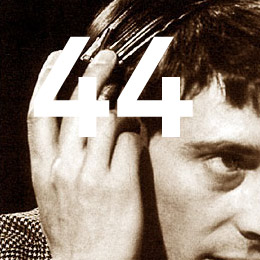
Episode 44 of Futurónica, a broadcast in Rádio Zero (every two weeks, on Friday nights, repeating on Tuesdays at 01h) airs tomorrow, September 9th at 21h (GMT).
The playlist for Futurónica #44 is:
- Luc Ferrari, Episode 3: From Prescott To Los Angeles (1) (2006, Far-West News: Episodes 2 and 3, Blue Chopsticks)
- Stefan Fraunberger, Peshawar 03.09.2009 (2010, XXXII° Concorso Internationale Di Musica Elettroacustica E Rumore, Monochrome Vision)
- Steve Peters, Sight Specifics – Santa Fe (1999, Site Of Sound – Of Architecture And The Ear, Errant Bodies Press)
- Luc Ferrari, Episode 3: From Prescott To Los Angeles (2) (2006, Far-West News: Episodes 2 and 3, Blue Chopsticks)
- Brandon Labelle, Event and its Double (2004, Concert, Sirr)
- Erdem Helvacioğlu, Wandering Around The City (2010, XXXII° Concorso Internationale Di Musica Elettroacustica E Rumore, Monochrome Vision)
- Luc Ferrari, Episode 3: From Prescott To Los Angeles (4) (2006, Far-West News: Episodes 2 and 3, Blue Chopsticks)
- Luc Ferrari, Episode 3: From Prescott To Los Angeles (5) (2006, Far-West News: Episodes 2 and 3, Blue Chopsticks)
- Russell Haswell, A Horde Of Flies Feast On A Rotting Pheasant Carcass (Extract) (2009, Wild Tracks, eMego)
You can hear Rádio Zero’s broadcasts at radiozero.pt/ouvir.
“strings.lines†reviewed by Liability

Alors que usure.paysage n’a pas fini de nous hanter, il n’est pas inutile de revenir sur un disque un peu plus ancien sorti l’année dernière sur Cronica (label ô combien connu et estimé en ces colonnes). Enregistré entre 2008 et 2010, Strings.Lines a été réalisé avec l’aide de Pierre-Yves Martel à la viol de gambe et de Chris Bartos au violon. Ici on s’éloigne quelque peu de la musique concrète mais sans la quitter vraiment. Le travail est axé entre les cordes et les expérimentations électroniques du canadien, le trio se donnant une ossature qui n’est pas toujours fixe. En effet, la ligne est toujours un peu floue entre les cordes lancinantes, fuyantes et le field recordings utilisé par Bernier qui, une fois encore, a trouvé une multitude de sources pour rendre ce disque à l’opposé d’une Å“uvre coincée entre quatre murs. Strings.Lines est fait de modulations, de variations, de colorations diverses et se veut même mélodique se refusant à céder à une stricte abstraction sonore. Néo-classique, musique contemporaine, concrète, électro-acoustique, ce que vous voulez, la musique de Nicolas Bernier ne se cantonne pas à une approche unique.
C’est ce qui fait tout l’intérêt de ce disque. En trouvant des solutions tonales et des lignes autant sonores que mélodiques qui évitent d’être trop droites, Bernier s’ouvre des solutions inespérées. Il faut que ça craque, que ça se torde mais avec souplesse, sans brutalité, sans cassure qui pourrait mettre en péril les pièces qui sont jouées devant nous. Bernier et ses camarades avancent vers un point de rupture mais sans jamais vraiment l’atteindre. On reste donc sur une expérience fragile, qui se laisse porter, emplie d’une poésie automnale qui touche bien souvent au sublime. Et c’est bien cela qui fait l’engouement (mesuré tout de même, Bernier ne remplit pas les stades…) que suscite ses pièces électro-acoustiques. Le sublime. Car on ne trouve rien à redire à ce qu’il nous présente. On reste même pantois. La beauté pure que dégage ce disque (et pas seulement celui-ci si on y regarde de près) redonne un intérêt aux musiques d’avant-garde. En cela on peut comparer Bernier à un artiste comme Fennesz qui, dans son genre particulier, avait su, à coups de disques imparrables, donner un sens à l’abstraction électronique moderne. Bernier est un peu dans cet optique là et Strings.Lines porte en lui les marques d’un grand disque. Fabien
via Liability
